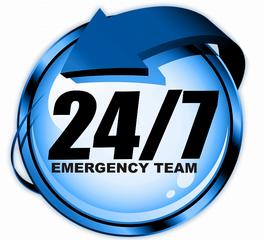After a water disaster such as a flood or burst pipes, moisture will not only affect your carpets and floor coverings, it will seriously affect your substructures such as plaster, internal walls, wall cavities, wood, concrete and cabinetry.
Of course, mould is a primary concern and without doubt, it will be present. But there may be other problems related to water damage such as crumbling drywall and plaster, rusting metal surfaces, weakening supports, electrical faults and more.
If water is not removed quickly and moisture is left in the property too long you run the risk of eventually bringing the whole house to ruin. By calling in a water damage restoration company you will get a professional clean-up crew who will be able to properly assess the situation and advise on the best plan for the fastest possible remedy.
There are three categories describing the type of liquid involved in water damage.
- Category 1 is liquid from a clean and sanitary source such as taps, drinking fountains, toilet tanks etc. If category 1 damage is not dealt with quickly enough, it can degrade into category 2 or 3.
- Category 2 is also known as grey water, and is characterised by having a level of contaminates that may cause illness if ingested. Sources of category 2 liquid damage include dishwashers, washing machines and flush from sink drains. Category 2 can degrade into Category 3 given such factors as time, temperature and contact with contaminates.
- Category 3 is grossly unsanitary and likely to cause severe illness within your family and possibly even death if ingested. Sources include sewer backup, flooding from rivers or streams, toilet overflow and stagnant liquid that has begun to support bacterial growth.
The next step in assessing water damage is deciding which class of destruction it is.
There are four classes of destruction:
- Class 1 has a low saturation rate and only part of a room or area is affected. There is little or no wet carpet and the moisture has only affected materials with a low permeance rate such as plywood.
- Class 2 affects an entire room including carpeting, the wetness has wicked up the walls at least 30cm and there is moisture remaining in the structural materials.
- Class 3 has a high level of destruction and involves saturation of the walls, ceilings, insulation, carpet and sub floors. The liquid may have come from overhead e.g. a leaking roof or overflowing upstairs bathtub.
- Class 4 is a speciality drying situation which means there has been enough liquid and time to saturate materials with a very low permeance such as hardwood, brick and stone.
A qualified water damage technician will be able to tell the difference between these classes and categories and form a restoration plan based on those factors.



